Are you planning a trip to Germany and researching what to do in gay Potsdam?
The small town near Berlin isn’t known for its gay nightlife, but the popular destination in Brandenburg offers LGBT travellers plenty of fun.
Tourists arrive here in droves year-round to tip toe through posh palaces, ancient cathedrals, fine arts museums and Potsdam’s unique Russian and Dutch Quarters. You’ll also find plenty of popular German restaurants, cafes and bars.
Potsdam’s LGBT community gather at local watering hole La Leander, the city’s only gay bar and cafe. You can also plan your trip to coincide with the city’s two annual gay festivals CSD Potsdam and Queensday.
Save this story to Pinterest so you can look at it later!
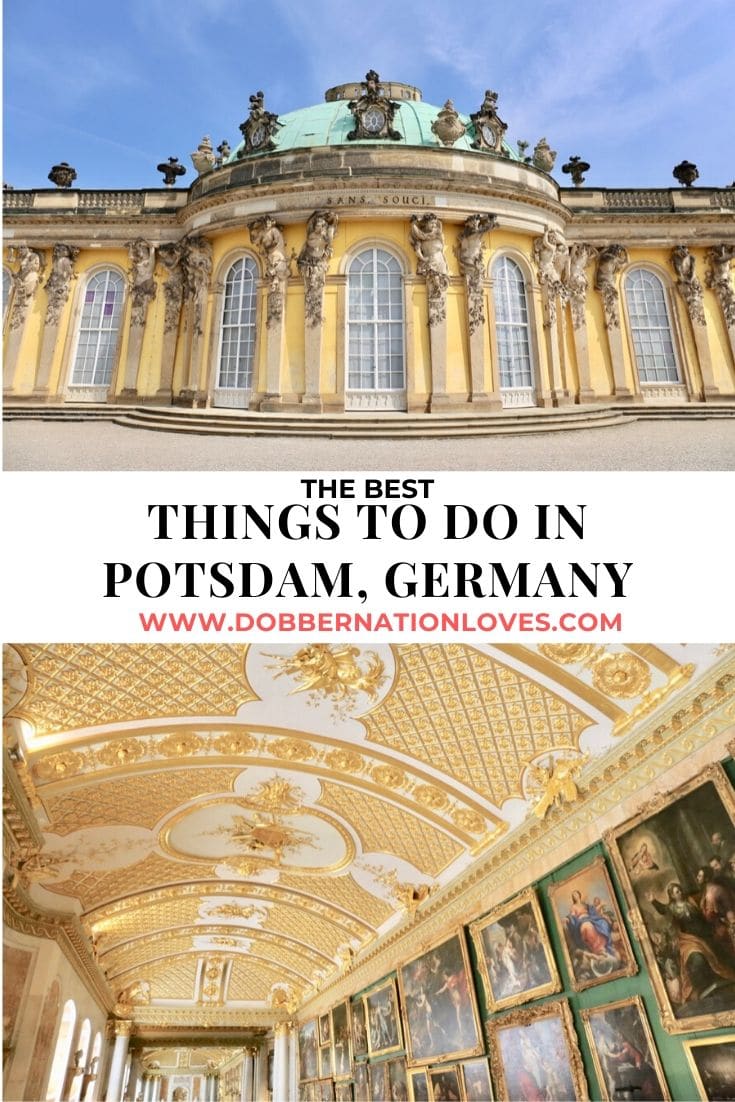
Visiting Gay Potsdam
Potsdam is conveniently located just 30 minutes south of Berlin on the local train. The sister city’s in Brandenburg offer a unique experience for gay travellers on holiday.
We suggest heading to Berlin on the weekend to enjoy the city’s thriving LGBT nightlife scene. Enjoy a jaunt to Potsdam during the week when the tourist crowds aren’t as loud.
Because gay Potsdam is so easily accessible by train from Berlin, most visitors plan a whirlwind trip to see the top sights and attractions on a day trip. If you have the time to spare, we suggest spending 2-3 nights in Potsdam. An extended stay allows you to enjoy the city at your leisure, unlike the many day tourists who rush through Potsdam’s palaces.

Was Frederick the Great Living Gay in Potsdam?
When visiting Potsdam’s top attractions you’ll regularly hear about the city’s most influential ruler, Frederick the Great.
The flamboyant ruler offers an interesting gay Potsdam connection. Today, most biographers agree Frederick was a homosexual, and that his sexual orientation was central to his life and character.
At age 16, Frederick formed an attachment to the king’s 17-year-old page, Peter Karl Christoph von Keith. Wilhelmine recorded that the two “soon became inseparable. Keith was intelligent, but without education. He served my brother from feelings of real devotion, and kept him informed of all the king’s actions.” Their friendship was apparently more gay than his father would have liked. As a result, Keith was sent away to a regiment near the Dutch frontier, while Frederick was sent to his father’s hunting lodge in order “to repent of his sin.”
Later in life, after a disappointing defeat on the battlefield, Frederick wrote: “Fortune has it in for me; she is a woman, and I am not that way inclined.”
In 1740, Frederick was forced to marry Elisabeth Christine, with whom he had no children. He immediately separated from his wife when his father died the same year. He would later only pay her formal visits once a year on her birthday.
In the 1750s, Frederick’s friend Voltaire began writing his famous memoire. The manuscript was stolen and a pirated copy was published in Amsterdam in 1784 as The Private Life of the King of Prussia. In it, Voltaire explicitly detailed Frederick’s homosexuality and the social circle surrounding him.
While Potsdam may not be Germany’s best known gay destination, the city’s most important ruler offers interesting insight for LGBT visitors.
CSD Gay Potsdam
Looking to visit gay Potsdam during Pride? Cities in Germany refer to their annual LGBT festivals as CSD Celebrations, short for Christopher Street Day.
CSD Potsdam is celebrated each May for two weeks and is focussed on promoting LGBT human rights and offering campy entertainment. Local attractions such as Filmmuseum Potsdam, get involved in the rainbow flag fun by offering interesting retrospectives on gay rights in Germany.
Potsdam CSD celebrations have a history of being more political than Cologne’s party-centric Pride. Since CSD Potsdam takes place in the Spring, it’s one of Europe’s earlier pride festivals. The city’s most popular queer event each year takes place during CSD Potsdam and is affectionately called Queensday.
Queensday first launched in 2004 as a response to the city’s famous Tulip Festival, which attracts thousands of mostly heterosexual retirees. Jirka Witschak hosted the first Queensday at La Leander gay bar in Potsdam.
Witschak explains, “I put my staff in Oranje and Mrs. Antje’s clothes and sold cocktails to our local gay clientele. What was planned as a statement against tourist delusions and heterosexuality, turned out to be a stroke of luck. The organizers of the Association of Dutch Culture in Potsdam’s Dutch Quarter were enthusiastic about what we’d done. The following year we agreed to set up a stage and now the rest is history!”
Queensday is a family friendly LGBT event in Potsdam featuring German drag queens who perform comedy acts, dance numbers and sing like true polka-loving divas. Past performances have included local queens Prinzessin Trixie, Jade Pearl Baker, Tilly Creutzfeldt-Jakob and a concert by the Landespolizeiorchesters.

Hotels in Gay Potsdam
The best hotels in Gay Potsdam are located in the heart of the Old Town. Since Potsdam’s top tourist attractions are largely within walking distance, it makes sense to situate yourself near the Dutch Quarter. All of the city’s hotels are gay-friendly and many of the luxury properties offer chic interiors.
We’ve included helpful links to the best hotel booking sites so you can compare prices and availability.
- Schloss Kartzow 5 STARS: Set in a rural stone manor, this upscale castle hotel offers elegant rooms, upscale restaurants with outdoor terrace seating, and an on-site patisserie.
Expedia | TripAdvisor | Booking.com | Agoda | HotelsCombined | Hotels.com
- INSELHOTEL Potsdam-Hermannswerder 4 STARS: this luxury hotel is located on Potsdam’s scenic lake near the city’s Botanical Garden. Features full-service spa, free buffet breakfast, indoor and outdoor pool and 88 finely appointed rooms.
Expedia | TripAdvisor | Booking.com | Agoda | HotelsCombined | Hotels.com
- Hotel am Havelufer Potsdam 3 STARS: By the River Havel, this modern hotel in a 19th-century building is centrally located in the heart of Potsdam, and features historic architecture.
Expedia | TripAdvisor | Booking.com | Agoda | HotelsCombined | Hotels.com
Tours in Gay Potsdam
- Potsdam Ultimate Tour: Take a journey back in time with the Ultimate Potsdam Tour.
- Potsdam Private Walking Tour: Explore the seat of the Prussian kings, including the magnificent Sanssouci Palace.
- Filmpark Entrance Ticket: Visit Europe’s oldest movie set with a trip to Filmpark Babelsberg in Potsdam and watch amazing stunt shows.
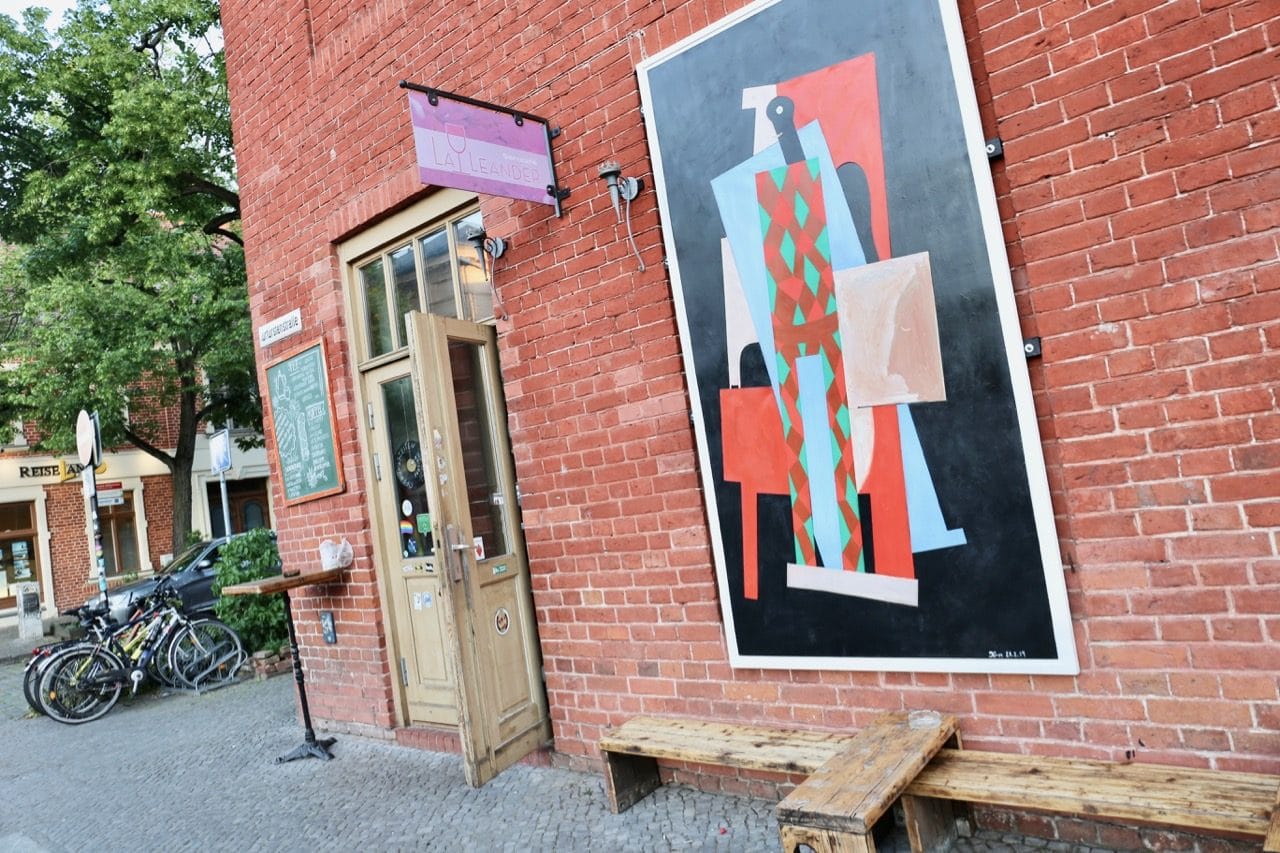
La Leander: Best Bar in Gay Potsdam
Benkertstraße 1, 49-331-5838408
La Leander is Potsdam’s only gay bar. Located in the city’s historic Dutch Quarter, the popular queer pub offers a range of gay-friendly events and music nights. It’s the best place in town to people watch and sip a fancy gay cocktail.
Grab a seat in the cozy dining room and you’ll find local members of the LGBT community gathering for a drink. During the warmer months of the year, try and sit at a table on the outdoor patio. You’ll find a large rainbow flag waving overhead.
La Leander is open 7 days a week from 3pm until 2am. Whether you’re planning a day trip to Potsdam or visiting over a few days, make sure to spend an entertaining evening at gay Potsdam’s “queer living room.”

The Dutch Quarter in Gay Potsdam
Our favourite neighbourhood in Potsdam is the Dutch Quarter. The picturesque buildings were constructed between 1773 and 1740 by Jan Bouman following the orders of Frederick William I of Prussia.
The neighbourhood features 134 red, two-storey brick houses, arranged on four squares. Known to locals as the Holländerhäuser or “Dutch houses,” they were originally built for Dutch immigrants. The iconic architectural borough makes up the largest exclusively Dutch housing development outside the Netherlands.
Other than ogling the neighbourhoods beautiful buildings, The Dutch Quarter offers those on a gay Potsdam holiday a stellar shopping experience. Stroll along the cobblestone streets and you’ll find local craft shops, galleries, antique dealers, cafes, restaurants and two museums. It also plays home to La Leander, Potsdam’s only gay bar.
The Dutch Quarter also hosts three major annual festivals – the Tulip Festival in April, the potter’s market in September and the Dutch Christmas Market in December.

Zum Fliegenden Hollander
Benkertstraße 5, 49-331-275030
Located in the heart of Potsdam’s Dutch Quarter, Zum Fliegenden Hollander is a popular German restaurant offering a cozy dining room, intimate bar and spacious outdoor patio.
Dutch master carpenter Gerit Swan and his wife moved into the building at Benkertstraße 5 in 1737. After more than 130 years of use as a residential building, the space was converted into a tavern in 1869. In 1907 restauranteur A. Seifert renamed the business the Flying Dutchman, inspired by a sailing ship and the Berin Kindl brewery.
Today, Zum Fliegenden Hollander’s interior offers a series of thematic dining rooms: the fireplace, reading room, hall, and bar counter. The menu at Zum Fliegenden Hollander features classic dishes from Brandenburg such as Boulette, roast pork stuffed with prune, plump currywurst and Eisbeinsülze meat jelly.
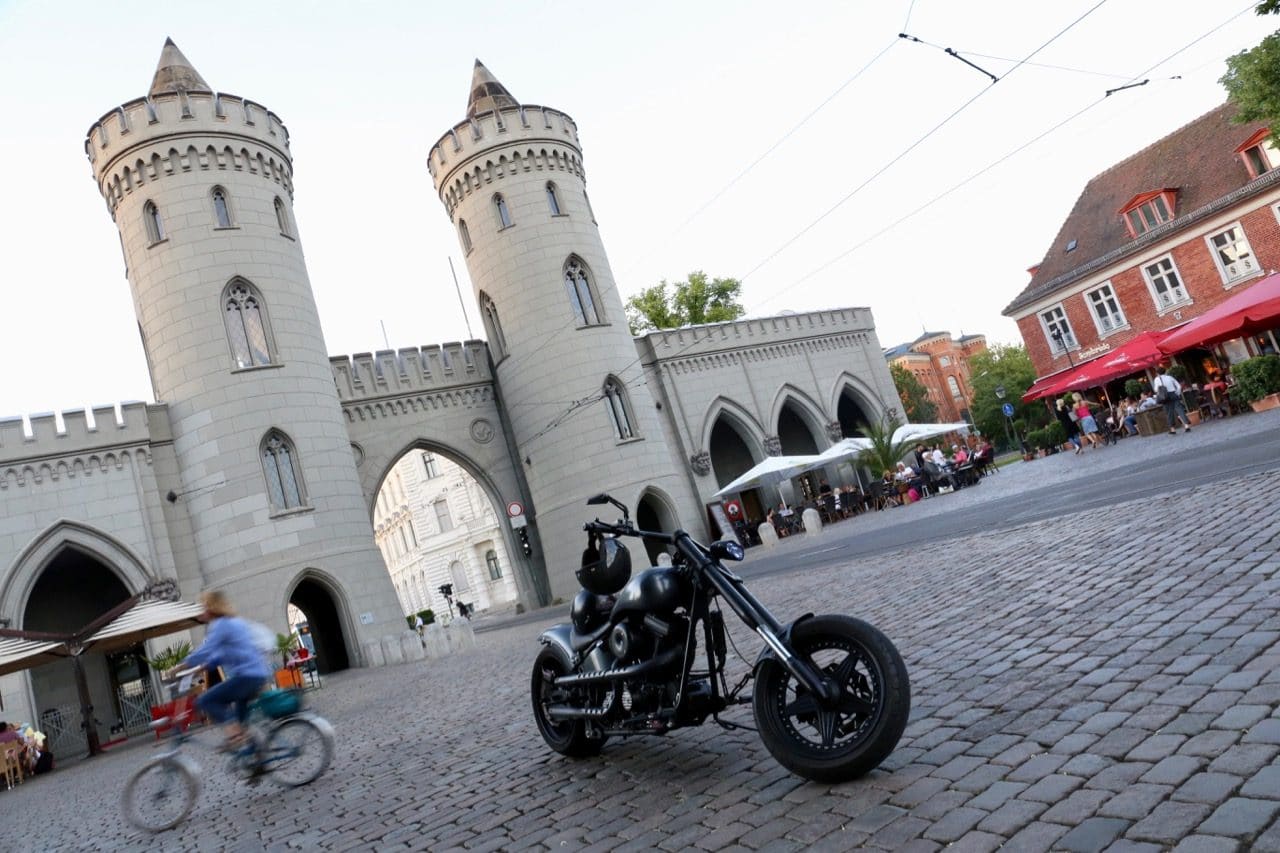
Nauener Tor
Built in 1755, Nauener Tor is one of three preserved gates in Potsdam. Its design was based on a sketch by Frederick the Great and finalized by architect Johann Gottfried Buring. The postcard-perfect architecture is the first example of the influence of English Gothic Revival architecture in Continental Europe.
Today, the three remaining Potsdam gates are connected by a promenade, instead of a city wall. Nauener Tor is located near the Dutch Quarter and the square in front of the gate offers lively cafes, restaurants and bars.
You May Also Enjoy Reading…
- Best Day Trips From Berlin
- Hotel Oderberger Berlin: Luxury Accommodation in Prenzlauer Berg
- 2019 Berlin Food Guide: Michelin Dining to Street-side Dishes
- The Grand Ahrenshoop: Best Hotel on Germany’s Baltic Coast
- Gay Hamburg: A Weekend of Boys, Burgers, Beer and LGBT Bars
- Spreewald Therme in Burg is the Best German Spa Getaway
- Freilandmuseum Lehde: Open-Air Museum in Spreewald
- What To Do in Gay Dresden on a Weekend
- What To Do in Gay Leipzig on a Weekend
- Furstenhof Hotel: Luxury Accommodation in Leipzig
- How to Live Like a King in Germany
- Things To See and Do in Dusseldorf
- Things To See and Do in Cologne
- Cruising from Koblenz to Rudesheim, Germany
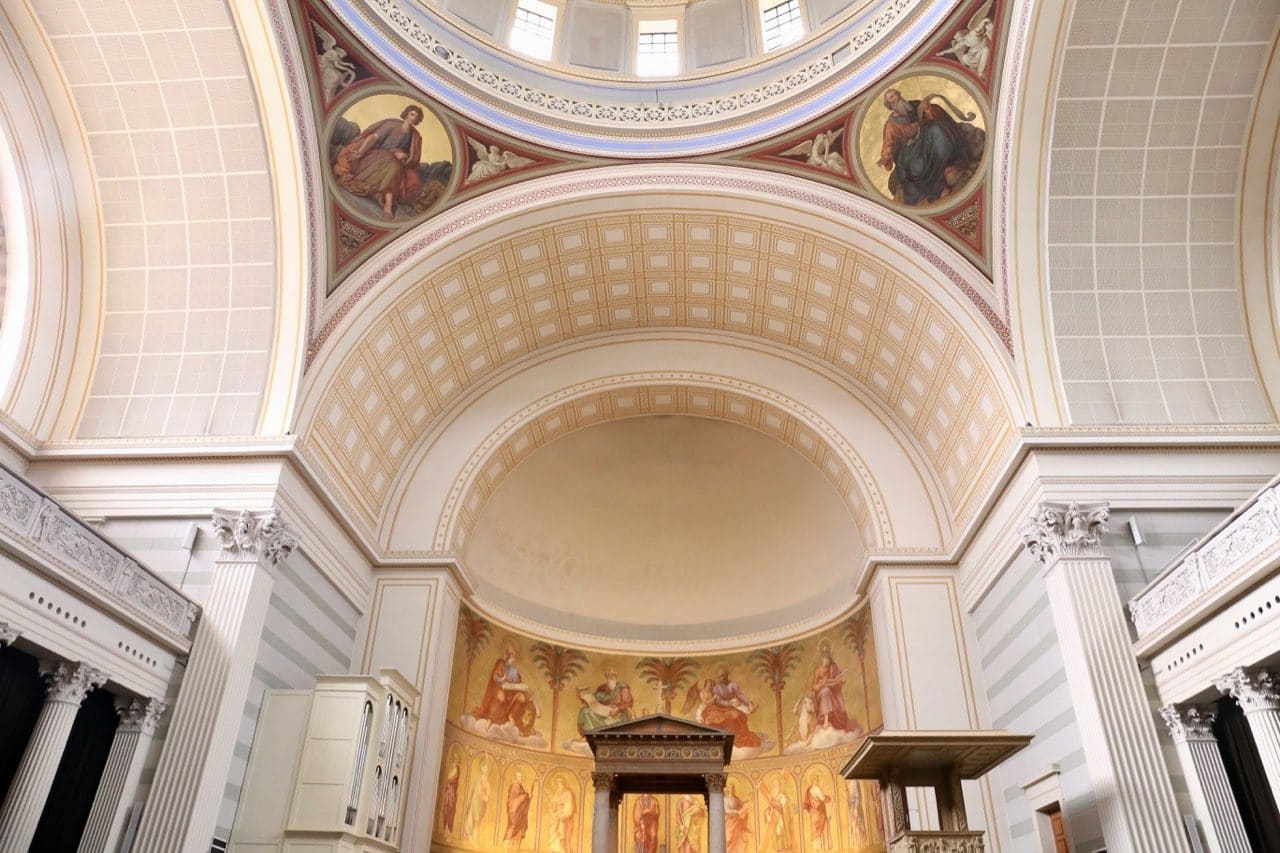
St. Nicholas’ Church
Am Alten Markt, 49-331-2708602
St. Nicholas’s Church is a Lutheran church that sits perched over Potsdam’s Old Market Square. Built in the Classicist style and dedicated to Saint Nicholas, it was built by Karl Friedrich Schinkel between 1830 and 1837.
During WWII, St. Nicholas’ Church was bombed during a British air raid and later badly damaged by Soviet artillery fire. After many years the building was reconstructed in 1981 and is considered one of the most important buildings in Potsdam.
Today, St. Nicholas’ Church is the largest church in Potsdam. Step inside and you’ll find a floor plan that looks like a Greek Cross and dazzling interior featuring glimmering gold.

Museum Barberini
Humboldtstraße 5-6, 49-331-236014499
Potsdam’s newest attraction is Museum Barberini, located in the Old Market Square across from St. Nicholas’ Church.
The fine art museum opened in 2017 and holds exhibitions ranging from Old Masters to contemporary art. Many of the paintings and sculptures inside Museum Barberini centre around the collection of the museum’s founder and patron, Hasso Plattner.
Museum Barberini puts on three temporary exhibitions per year, featuring loans from international museums and private collections. In its opening year, the Barbernini put on spectacular shows in collaboration with the State Hermitage in St. Petersburg, the Musee d’Orsay in Paris and National Gallery of Art in Washington.
During our visit, the Barbernini was packed with art lovers who lined up to enjoy a retrospective on Picasso’s life work. We really enjoyed the museum’s permanent collection, which features artists from the former German Democratic Republic. The inspiring works from GDR times offer insight into what life was like before the reunification of Germany.
If you’re an art fan planning a gay Potsdam getaway, a stroll through Museum Barberini is a must!
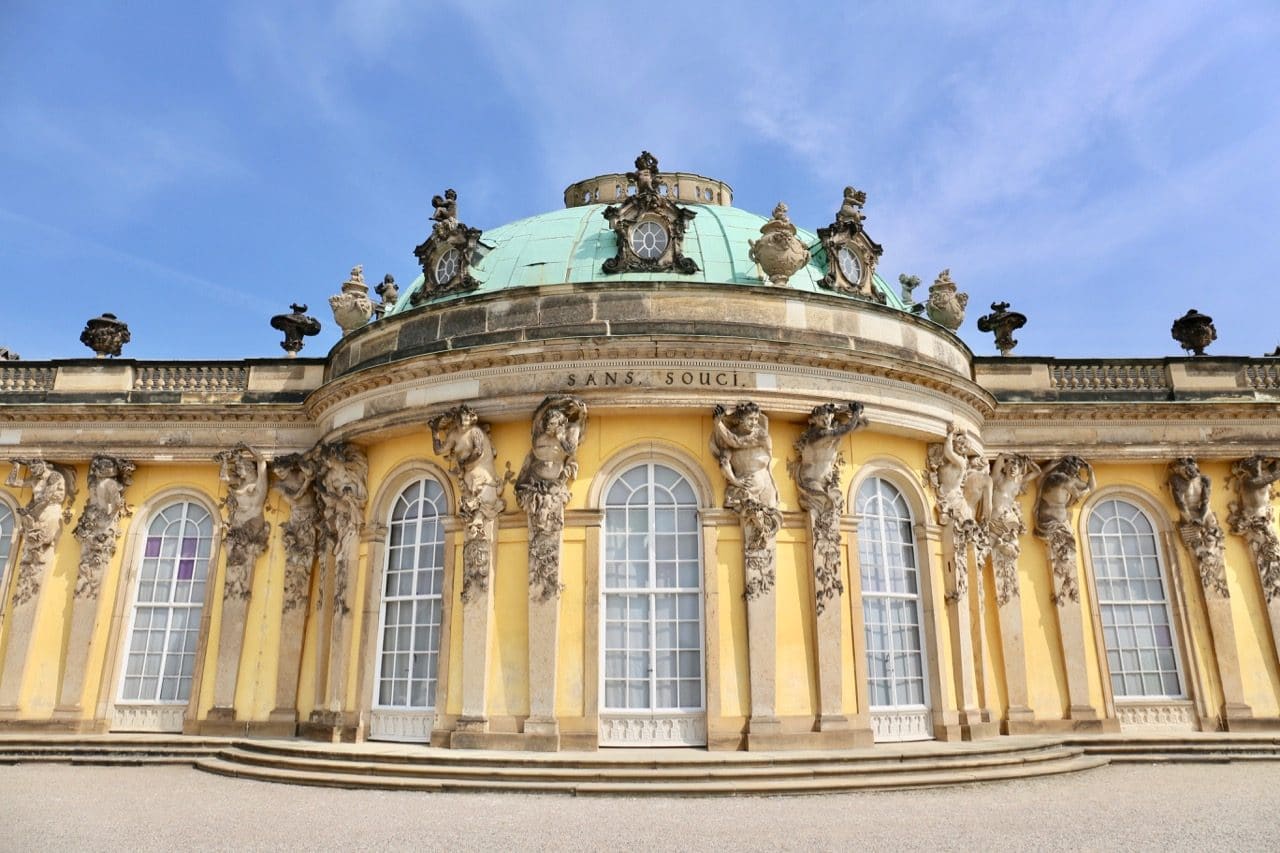
Sanssouci Palace
Maulbeerallee, 49-331-9694200
Sanssouci was the summer palace of Frederick the Great, King of Prussia. The posh palace in Potsdam is often referred to as the German rival to France’s Versailles.
Sanssouci Palace is designed in the more intimate Rococo style and far smaller than its French Baroque counterpart. It’s charms include a number temples, terraced gardens, water fountains, and gay decorative sculptures in the park.
The palace was designed by Georg Wenzeslaus von Knobelsdorff between 1745 and 1747. The construction of Sanssouci Palace was meant to act as King Frederick’s private residence when he needed to escape the pomp and ceremony of the Berlin court. The palace’s name is a clear indication of this, as “sans souci” translates to “without concerns.”
The single-story villa contains just ten principal rooms, built on a brow of a terraced hill at the centre of Potsdam’s park. After WWII, the palace became a popular tourist attraction in East Germany. Following the reunification of Germany in 1990, Frederick’s body was returned to the palace and buried in a new tomb overlooking the gardens.
Today, Sanssouci Palace is visited by more than two million people each year. Be sure to purchase your timed entrance ticket in advance to avoid disappointment. In the high season tickets to Sanssouci Palace can sell out several days in advance.

Sanssouci Picture Gallery
Located beside Potsdam’s most photographed palace, Sanssouci Picture Gallery is the oldest surviving museum built by a ruler in Germany.
Frederick II was known as a passionate collector of paintings. In his youth, he preferred contemporary French and Rococo, with many of the walls in Sanssouci Palace adorned with paintings by his favourite artist, Antoine Wateau. After his accession to the throne in 1740, the king became interested in historical paintings, which were trendy at the time.
Sanssouci Picture Gallery was built over the palace’s former greenhouse, which Frederick the Great used to grow tropical fruit. Step inside the great hall and you’ll find intricately designed gilded ornaments on the slightly curved ceiling. The polished floors are laid out in matching colours with a rhombic pattern of white and yellow Italian marble. Across the green walls, large framed paintings are laid out densely alongside each other in a Baroque style.
Highlights from Sanssouci Picture Gallery include Caravaggio’s Incredulity of St Thomas, Anthony van Dycks Pentecost and the Four Evangelists by Peter Paul Reubens.
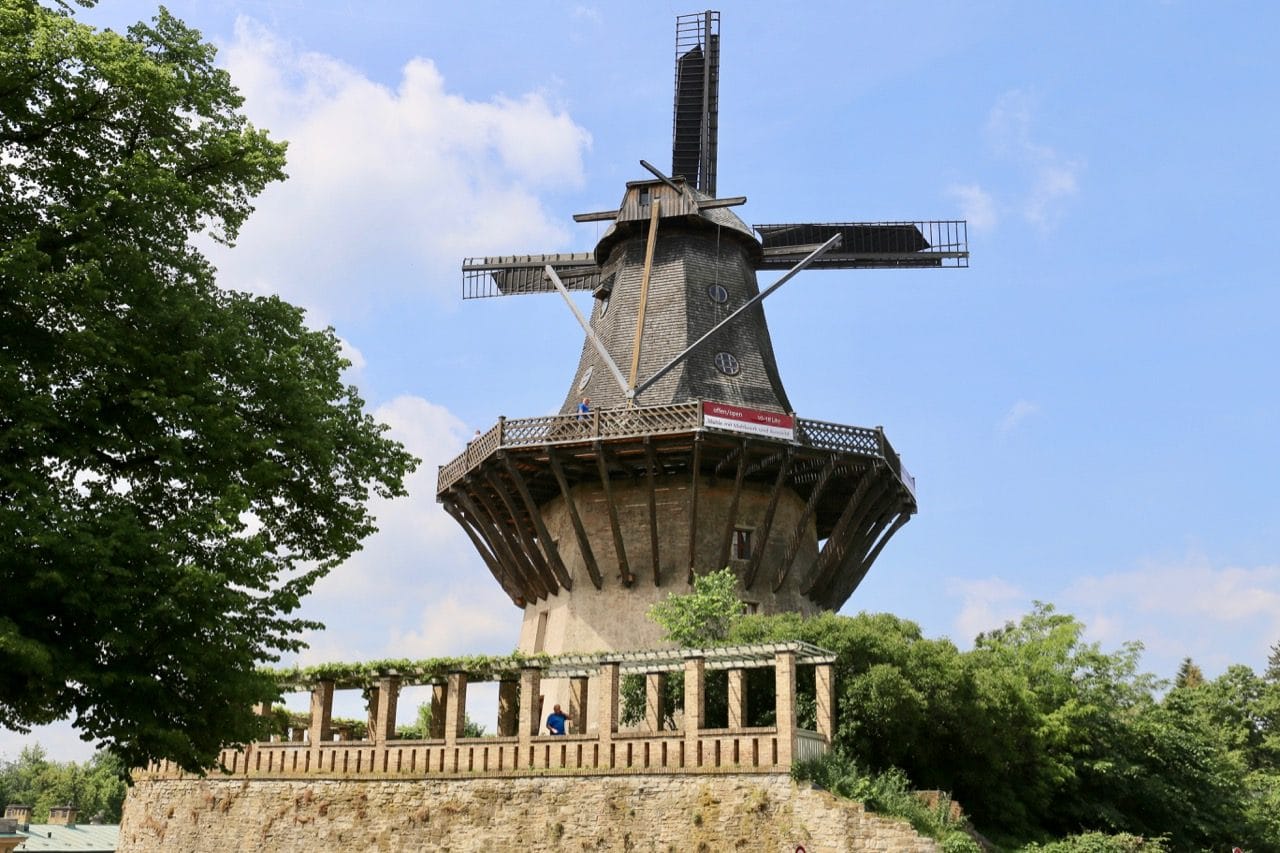
Historic Windmill of Sanssouci
Maulbeerallee 5, 49-331-5506851
Potsdam’s historical mill stands proudly perched over Sanssouci Palace.
In the mid-18th century, Potsdam was home to 21 mills, many of which were destroyed during WWII. The historical mill in Park Sanssouci burned down in 1945 but was painstakingly reconstructed and reopened in 1993.
Today, visitors can learn about the history and technology of grain processing in Potsdam. Highlights include visiting a working mill workstation, sifting flour and enjoying scenic views over the park thanks to a 360 degree outdoor terrace.
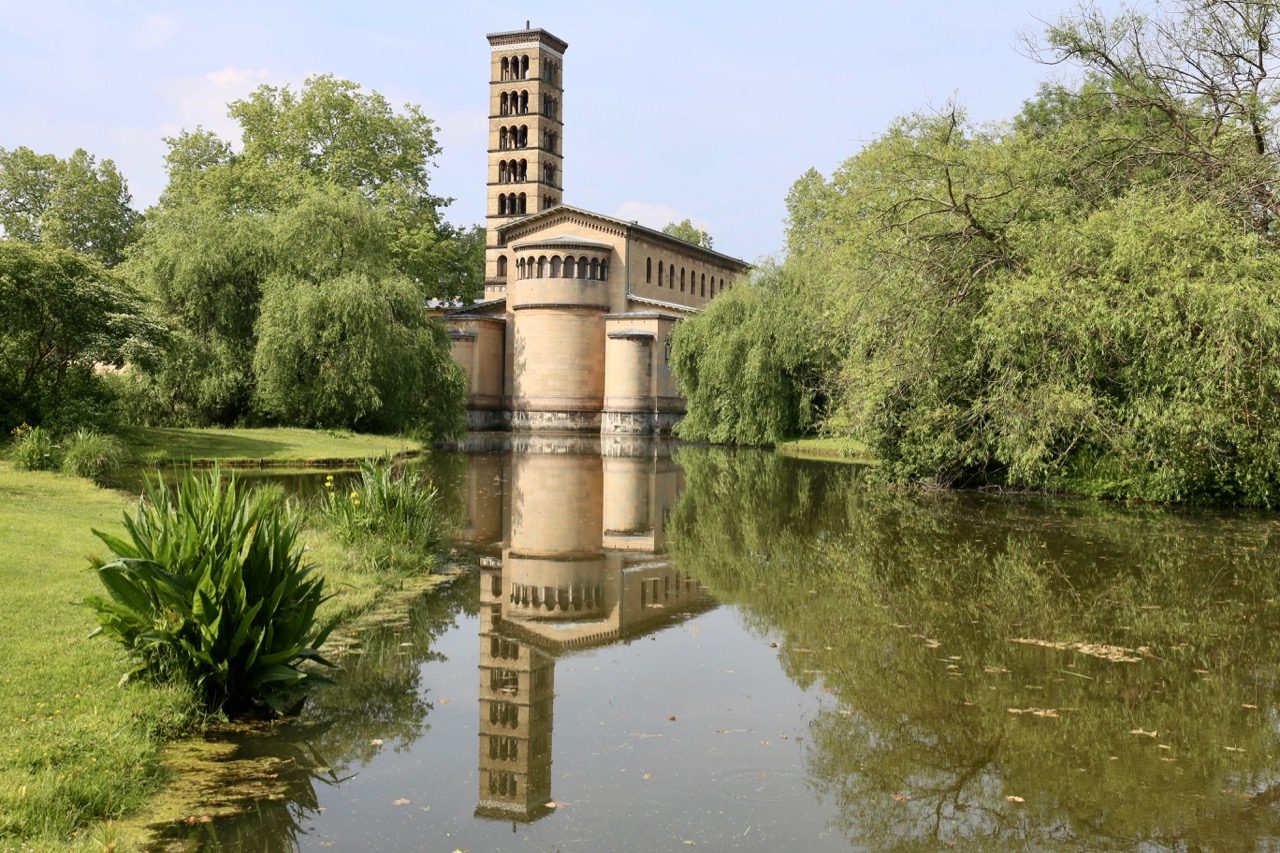
Church of Peace
Am Grünen Gitter 3, 49-331-974009
The Protestant Church of Peace sits nestled in the Marly Gardens on the Green Fence in Sanssouci Park. Commissioned by the art and culture loving Prussian King William IV, the Church of Peace was built in just three years starting in 1845.
Construction plans for the Church of Peace were provided by the royal architect Ludwig Persius. The design is based on a medieval copperplate depicting the church of San Clemente in Rome. The architecture features a triple-nave columned basilica with an adjoining campanile that reaches 42 metres in height.
A 13th-century Venetian mosaic above the apse adorns the interior, reclaimed from a dilapidated church in Murano. Beneath the sanctuary lies the royal vault, housing the tombs of Frederick William and his wife Elisabeth Ludovika.

Neues Palais
While Sanssouci may be the most visited palace in Potsdam, our favourite place to wander is the significantly larger Neues Palais complex.
Located on the western side of Sanssouci Park, Neues Palais is considered the last great Prussian Baroque palace. The building began construction in 1763 under Frederick the Great and was completed in 1769.
The building of Neues Palais launched at the end of the Seven Years’ War, to celebrate Prussia’s success. For the Prussian King, his ornate New Palace was not a principal residence, but a pomp display for the reception of important visiting royals and dignitaries.
Of the over 200 rooms, four principal gathering rooms and a theatre were used for royal functions, balls and special state occasions. During the King’s occasional stays at the palace, Frederick relaxed within a suite of rooms at the southern end of the building. His richly decorated spaces included two antechambers, a study, concert room, dining salon and bedroom.
Step inside the huge palace and you’ll find exuberant decorations in the Rococo style. The most eccentric and quirky of all of these rooms is the Grotto Hall, featuring more than 24,000 seashells, minerals, fossils and gemstones that glitter and sparkle.
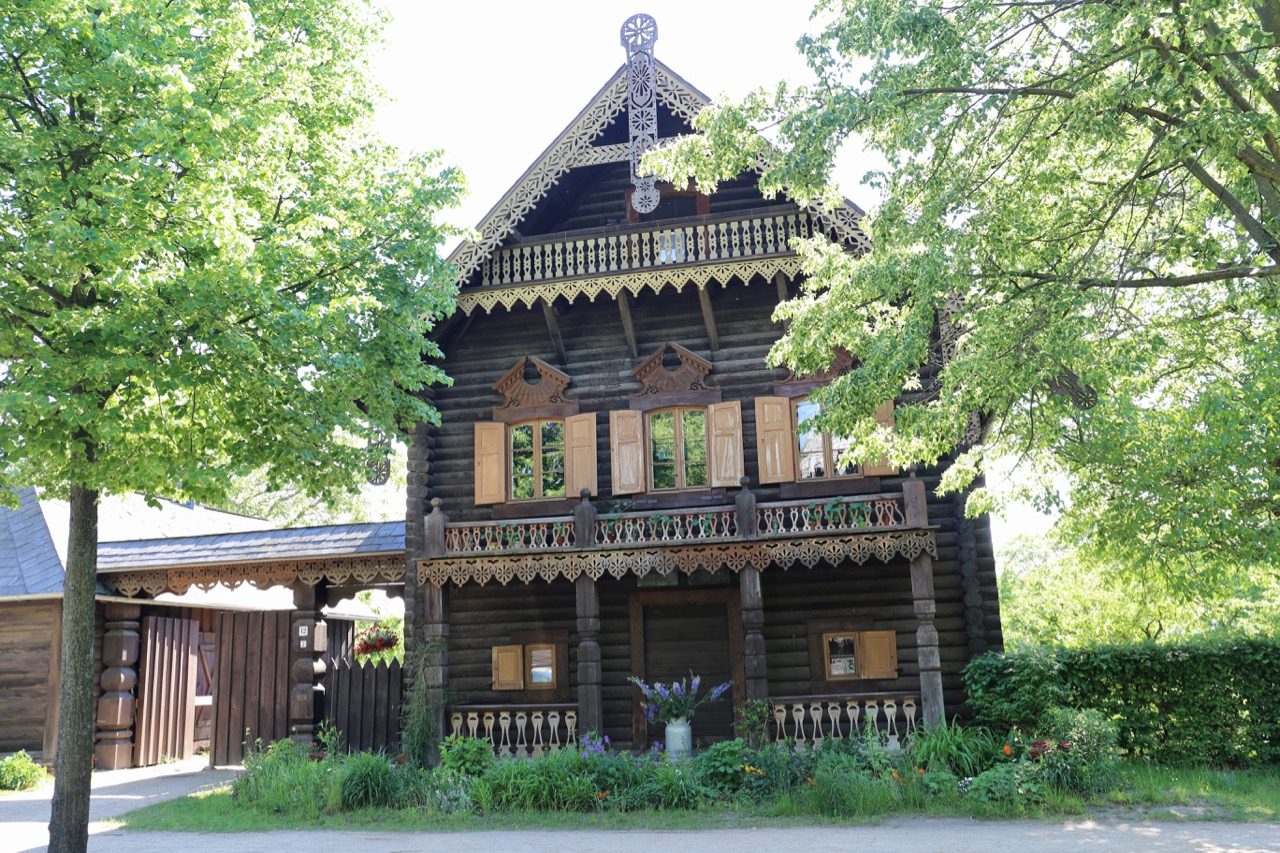
Alexandrowka
Russische Kolonie 2, 49-331-8170203
If you’re planning a gay Potsdam itinerary don’t miss out on one of the city’s most unique neighbourhoods. Alexandrowka is a quaint Russian village located between the Dutch Quarter and Pfingstberg. The historic Russian neighbourhood is made up of 14 farms as well as a pretty pink and white painted orthodox church.
After being beaten by Napoleon’s army, Prussia formed an alliance with France against Russia in 1812. Over 1,000 Russian prisoners of war were captured, 62 of which remained in Potsdam as singers of King Frederick William III’s choir. Russia and Prussia later formed an alliance, and when Tsar Alexander I died in 1825, Prussia’s King wished to built a monument in his honour.
In 1826, he gave an order to build a Russian colony for the remaining 12 singers and their families. When the Russian families moved in, the houses were completely furnished with Biedermeier furniture, the gardens were in bloom with flowers, vegetables, and fruit trees, and in every stable was a cow. Living in the Russian villas came with a set of rules. The inhabitants were not allowed to sell or rent the properties, and the deed could only be transferred to a male heir. If there was no male descendant or if a family was to leave, the property would be returned back to the crown.
Now a popular tourist destination, the entire Russian village has been renovated. In 2005 a museum about the history of the village was placed in one of the empty houses and features furniture and treasures from the period the singers lived here. The highlight of the Alexandrowka Museum is its backyard garden cafe and teahouse. On a sunny day come here to nibble on Russian sweets while sipping a pot of tea in a wild and rustic garden.

Belvedere on the Pfingstberg
Pfingstberg, 49-331-20057930
Enjoy a short walk north of Alexandrowka and you’ll find Belvedere on Pfingsberg. The palace sits perched on the summit of Pfingstberg hill, offering a quiet ambiance where visitors feel connected to the surrounding nature.
Belvedere on Pfingsberg was commissioned by King Friedrich Wilhelm IV of Prussia and built between 1847 and 1863 as a viewing platform. The open-air building contains two modest rooms for entertainment, located in the two upper towers. The Belvedere’s two towers are modelled on Italian Renaissance architecture, while the wings are Roman in style and feature Greek-inspired details.
If you’re a garden lover planning a gay Potsdam tour, enjoy marvelling at landscape architect Peter Joseph Lenne’s work. He was responsible for the design of the grounds which mimic the English landscape garden, featuring serpentine paths and dense hardwood trees.
You May Also Enjoy Reading…
- Things To Do in Gay Malaga
- Beyond Boystown: A Perfectly Gay Weekend in Chicago
- Things To Do in Gay Rochester
- Gay Yoga: Plan a Healthy Gay Holiday
- Gay Puerto Vallarta: Visit Mexico’s Best LGBT Beach Resort
- Best Gay Bars in Puerto Vallarta
- Gay Hamburg: A Weekend of Boys, Burgers, Beer and LGBT Bars
- What To Do in Gay Dresden on a Weekend
- What To Do in Gay Leipzig on a Weekend
- A Gay Cooking Class in Savannah at Chef Darin’s Kitchen Table
- Things To Do in Belfast: Gay Holiday in Northern Ireland’s Capital
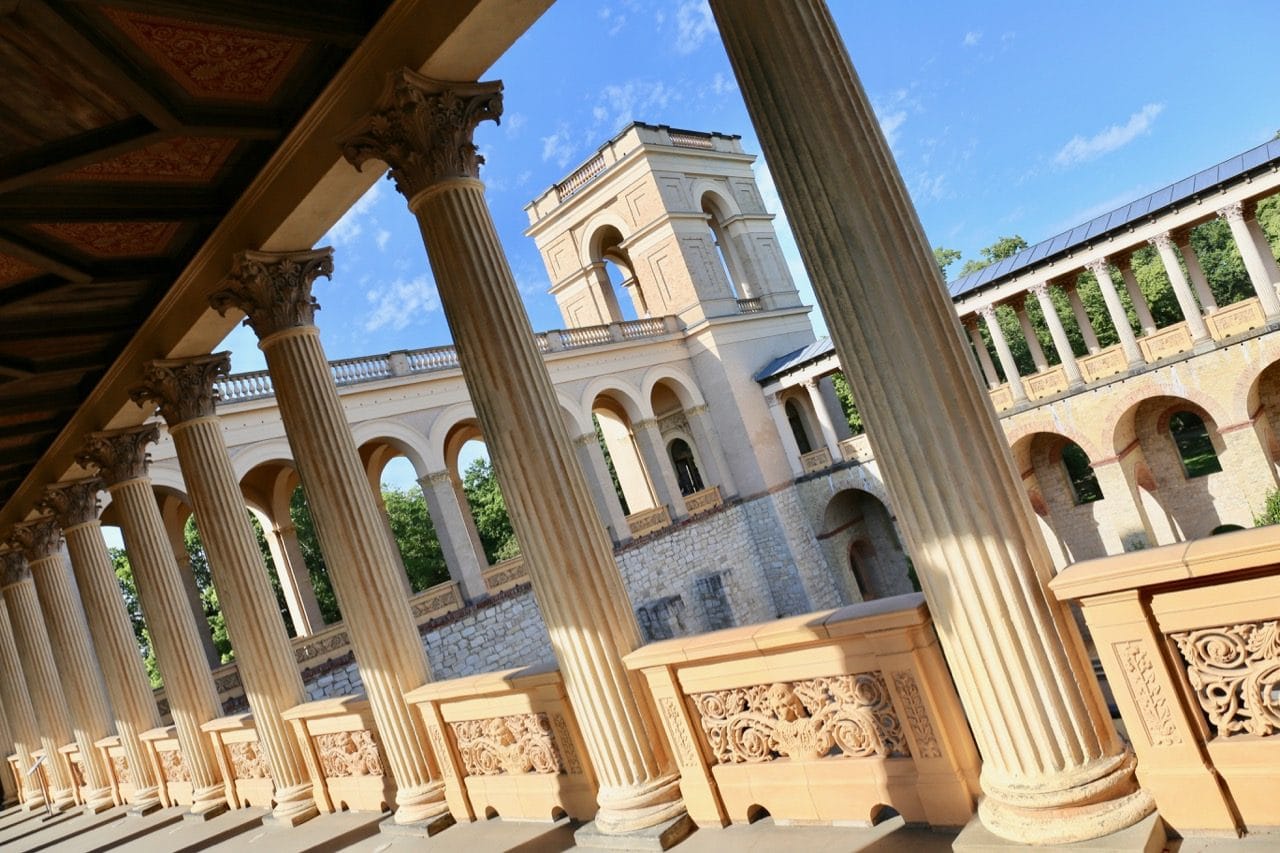
Kades Restaurant
Große Weinmeisterstraße 43B, 49-331-293533
Finish your gay Potsdam getaway by strolling from the Belvedere to nearby Kades Restaurant on Pfingsberg. The romantic restaurant features a cozy dining room and spacious sun-soaked terrace surrounded by lush greenery.
Mario Kades’s menu offers a modern spin on classic German dishes. The restaurant’s chef focusses on sourcing fresh seasonal ingredients such as deer from the Fläming Heath, vegetables from Glindow village and organic beef from Neuzelle.
Kades Restaurant is one of the best patio’s in Potsdam to watch the sunset. The sommelier offers an extensive wine list showcasing the best bottles from across Germany. We suggest sipping a cool glass of Riesling while forking through a plate of roast duck or butter fried perch fillet. As the sun slips behind the horizon cheers your glasses and let out a deep, satisfying sigh.
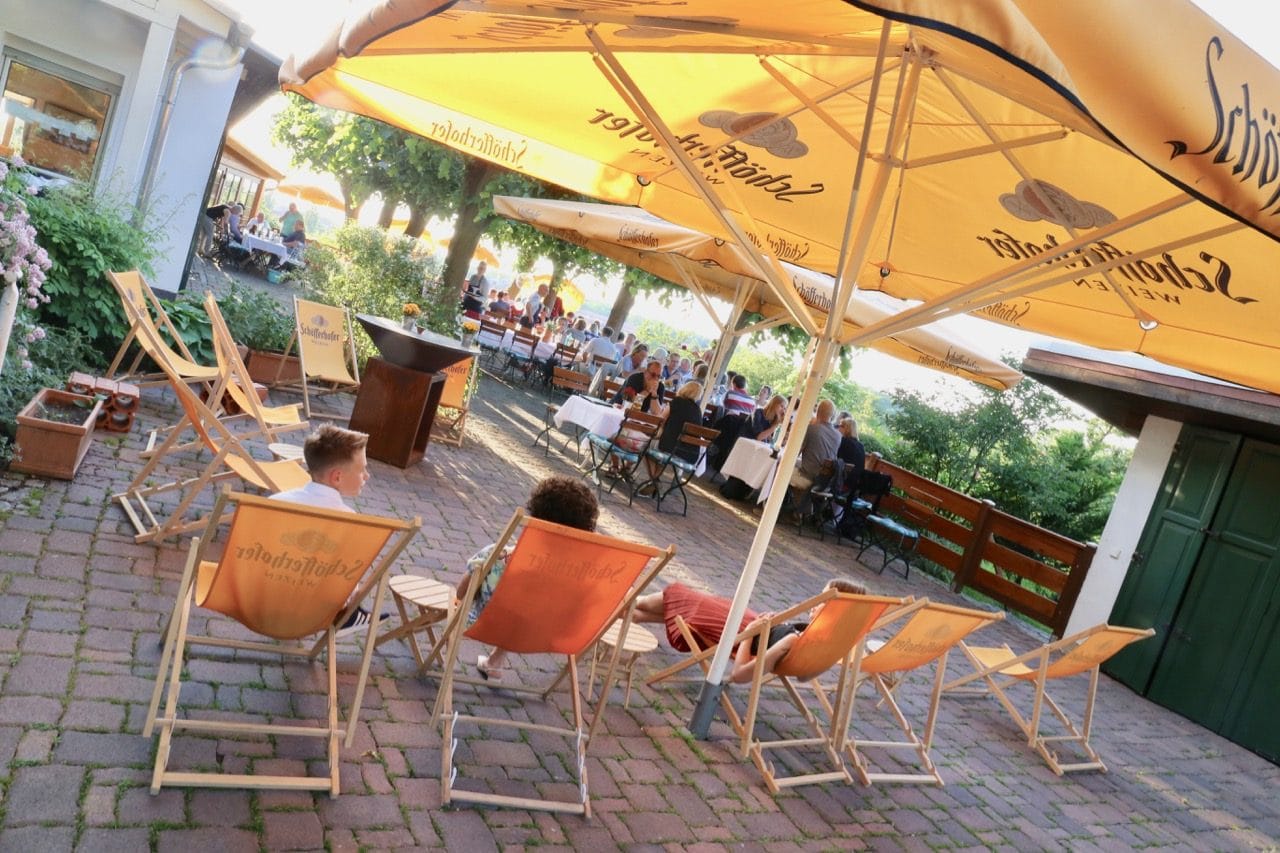
Review Our Travel Checklist When Planning Your Next Adventure!
Find the best flights on Skyscanner
Never travel without insurance! We suggest World Nomads comprehensive coverage as it includes over 250 adventure activities such as scuba diving, bungee jumping and surfing.
If you’re planning a road trip make sure to compare the best local car rental options.
Looking to book a tour or VIP experience on holiday? Book the best local tours on Viator.
Be sure to check your travel destinations electrical plug requirements in advance. If you travel often be sure to purchase a multi-region adaptor.
Whether you’re marching through a city or exploring a rugged rural landscape, it’s important to ensure you’re traveling with comfortable footwear. We suggest these comfortable walking shoes for urban adventures or these waterproof hiking boots when embarking on a hike holiday.
Capture your holiday on a quality camera. We suggest the pocket-sized Canon Powershot G7 or professional SLR we shoot with Canon EOS 6D.
Some of the links in this story use affiliate links. This means that if you book your accommodation through our site, Dobbernationloves will earn a small commission at no extra cost to you. Your support helps us to produce comprehensive content.


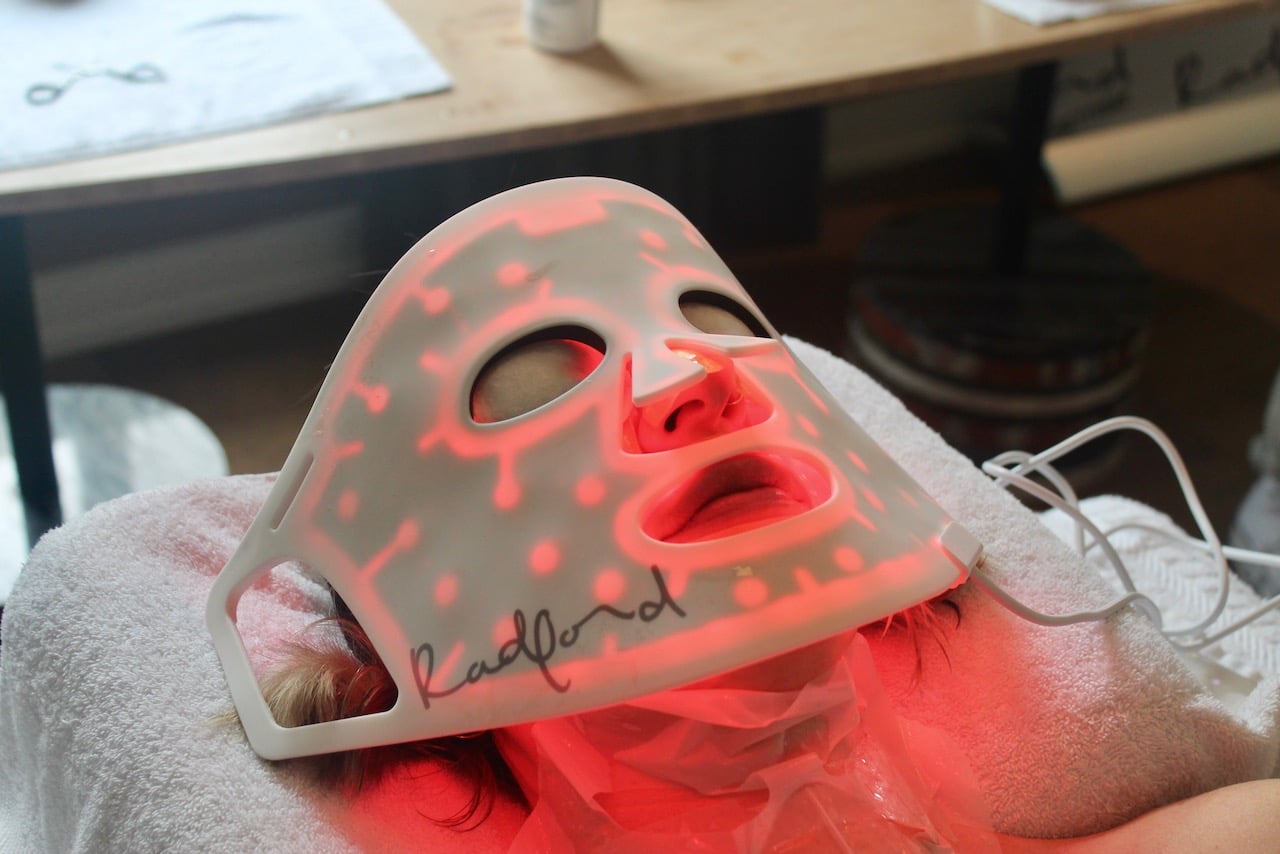
I’m surprised when writing about Frederick II you didn’t mention Hans Hermann von Katte. Frederick’s father might has sent the page bay to serve neat the Dutch frontier (though I’m not too sure Prussia had any land that far west at the time, but let that pass), but the old bastard’s treatment of von Katte and his son was horrific. When the two decided to, pretty much, elope and were caught, Frederick I forced his son to witness the beheading of von Katte. That would pretty much do anyone’s head in.